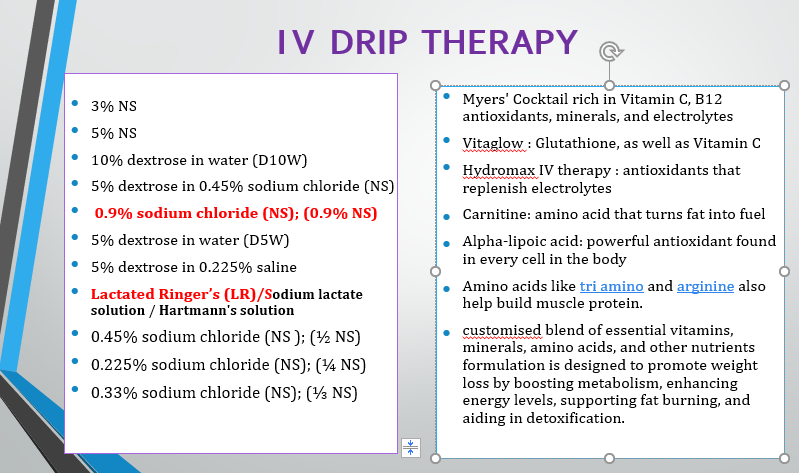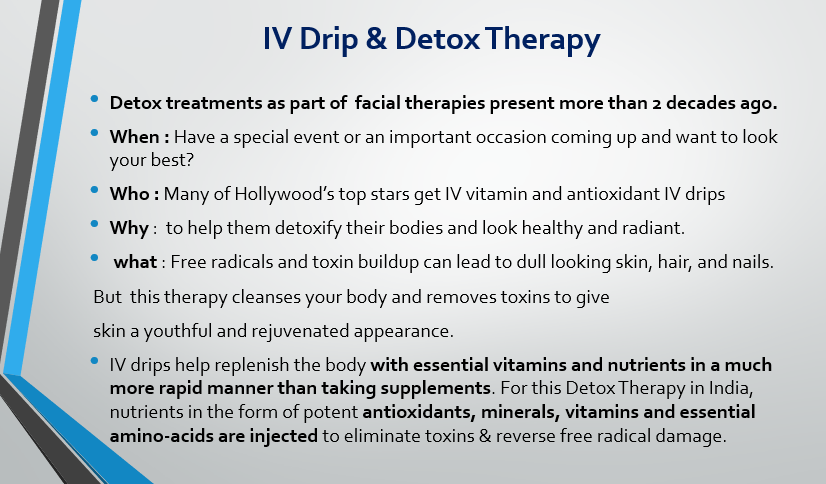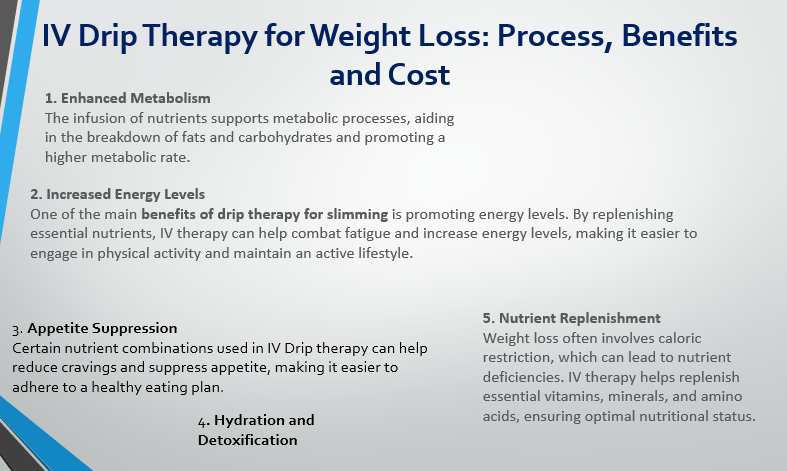Post Views: 167
Table of Contents
ToggleIV Drip Therapy ppt
Definition :
It is the administration of fluid in to blood stream by I/V catheter or butterfly needle inserted in to a peripheral vein to replace water, Electrolyte & Nutrients.
. Used to clients
- who are unable to take orally.
- Replace water, electrolytes, & nutrients more rapidly than oral administration
- Unconscious patient
- Hypovolemic shock
- During surgery
Recent trends in use of the IV DRIP THERAPY
- Hydromax IV therapy : antioxidants that replenish electrolytes 14 k- 18 k
- Bridal Care : Master antioxidant Glutathione+ vit c,29k-35k
- Megaboost : vitamin C Ultraviv: against common colds, and flu-like symptoms, seasonal allergies or even a hangover..

Comparison Of IV content :THEN & NOW

IV DRIP THERAPY : NEW USES AND TRENDS



Extended uses Of IV DRIP THERAPY:
- Recovery
- Recover from jet lag
- For improving immunity
- Treat altitude sickness
- Improve athletic performance
- anti-aging and
- general health and wellness
Harmful effects of other/ newer uses of IV therapy
- kidney disease: infusions containing magnesium (or, less commonly, potassium)
- can cause problems such as abnormal heart rhythms or muscle weakness.
- lead to fluid overload, which could temporarily, but occasionally permanently damage the kidneys, brain, and/or heart.
- According to a few study reports, infusions of the Myers’ cocktail or another combination of vitamins and minerals can lead to symptoms of depression, insomnia, and upset stomach.
- Excess amounts of vitamins and minerals can be harmful. For example, large IV doses of thiamine, a B vitamin, can cause anaphylaxis, a potentially life-threatening allergic reaction. Also, high doses of vitamin B6 may cause damage to peripheral nerves (peripheral neuropathy).
Related Research studies
- Intravenous glutathione for skin lightening: Inadequate safety data
Lester M Davids 1, Jennifer C Van Wyk, Nonhlanhla P Khumalo
Affiliations Expand
PMID: 27499402 DOI: 10.7196/SAMJ.2016.v106i8.10878
- A case series (GSH soap: 15 patients) reported skin lightening based on photography. Two systematic reviews of IV GSH for preventing chemo-induced toxicity and a third review of adjuvant therapy for Parkinson’s disease altogether included 10 trials. Most trials reported either no or minimal GSH adverse effects, but all had treatment durations of a few doses (IV) or 4 -12 weeks. No study reported long-term IV GSH use. Conclusion. In spite of widespread reported use, there are no studies of IV GSH use for skin lightening or of its safety for chronic use (for any indication). The switch from brown to red melanin production may increase the risk of sun-induced skin cancers in previously protected individuals. Regulatory assessment of systemic GSH administration for cosmetic use by the Medicines Control Council seems urgently warranted to protect consumers from potential side-effects and from complications of IV infusions. This is especially concerning because of reports of GSH bought online. Effective topical GSH may be useful for hyperpigmented skin disorders, but this requires scientific scrutiny. The debate on the merits of cosmetic skin lightening is best handled by multidisciplinary teams.
- INTRAVENOUS GLUTATHIONE AND DISEASE STATES. Exogenous intravenous supplementation of glutathione could possibly increase cancer growth as it may supply the much-needed cysteine when GSH is broken down intracellularly
- https://digitalcommons.liberty.edu/cgi/viewcontent.cgi?article=2033&context=honors
- Apoptosis of the cell occurs as a result of damage to the mitochondria. The ROS may activate nuclear transcription factors such as tumor necrosis factor alpha (TNF-α) to begin the early stages of apoptosis, or indirectly cause apoptosis through cell damage by disrupting plasma membrane lipids and mobilizing Ca2+ , which leads to early apoptosis. Increased levels of GSH disrupt the ionic gradient of the mitochondria, causing it to rupture, leading to late necrosis. The Philippine FDA mentioned that the use of intravenous glutathione can cause SJS/TENS. Stevens-Johnson syndrome (SJS) and toxic epidermal necrolysis (TEN). These are rare, life-threatening conditions that are caused by an adverse immune reaction to medications. The mechanism of how this could occur is still under investigation, and little is known about the role of glutathione in this disease state.
- Zubair et al, 2016, https://digitalcommons.liberty.edu/cgi/viewcontent.cgi?article=2033&context=honors
- 50 female test subjects enrolled, 32 had data recorded from them and were divided into 2 groups: Group A skin types match group B skin types; 25-47 years of age
- Not well-tolerated; 32 out of 50 completed study; 8 subjects from group A had deranged liver function tests (defined as 1.5 times above reference range), and 1 subject developed anaphylactic shock; all were excluded from results. 9 control from group B who matched the skin types of subjects excluded from group A were also excluded to keep study standardizations Side effects in 25 subjects in group A: Feeling warmth during injection (44%) Abdominal cramps (40%)
Further links on IV Drip Therapy

- https://revivindia.com/iv-therapies
- https://www.bodycraft.co.in/blogs/iv-drip-weight-loss-therapy-benefits-process-cost/
- https://www.bouncehydration.com/blog/iv-therapy-benefits
- https://www.bodycraft.co.in/clinic/body/iv-drip-therapy/
